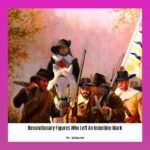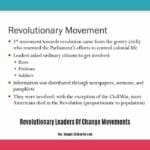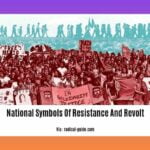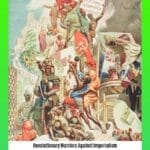Presenting “Revolutionary Icons: Embodiments of People’s Battles,” a compelling narrative exploring the lives and legacies of individuals who dared to defy adversity and ignite the flames of resistance. These icons, representing people’s battles, have shaped history and continue to inspire movements for social justice. Join us as we delve into their stories, examining their struggles, triumphs, and the enduring impact they have had on the fight for a more equitable world.
Key Takeaways:
![]()
- Revolutionary War prints include portraits, satirical cartoons, battle scenes, and allegories.
- John Trumbull captured iconic Revolutionary War scenes in his paintings.
- Notable prints depict the Boston Massacre (engraved by Paul Revere), British troops’ actions in Concord, and the Battle of Concord.
- The War of 1812 made the American flag an important symbol.
Revolutionary Icons: Representing People’s Battles
Revolutionary icons are powerful symbols of people’s struggles against injustice, inequality, and oppression. They dare to galvanize the masses, embodying the hopes and aspirations of the oppressed, and they inspire resistance and change.
Throughout history, numerous revolutionary icons have emerged, each representing a unique cause and embodying the zeitgeist of their time.
Che Guevara exemplified the spirit of armed resistance against oppressive regimes, becoming an icon of the Cuban Revolution.
Martin Luther King Jr., with his nonviolent approach to civil rights, inspired generations to fight for equality and justice.
Rosa Parks, by refusing to give up her seat on a bus, sparked the Montgomery Bus Boycott and ignited the American Civil Rights Movement.
Nelson Mandela, spent 27 years in prison for fighting against apartheid and became a symbol of resilience and reconciliation.
Emiliano Zapata, led a peasant revolution in Mexico, fighting for land rights and social justice.
These are but a few examples of the countless revolutionary icons who have fought for the rights of the people. Their symbolism and legacy have shaped our understanding of freedom, equality, and justice, serving as timeless reminders that the fight for a better world is an ongoing struggle.
Discover the nation’s struggle embodied by revolutionary heroes, where brave souls fought for freedom. Explore the national symbols of resistance and revolt that ignited the spirit of independence. Uncover the stories of revolutionaries representing independence fights, who sacrificed their all for the nation’s cause.
Symbolism and Meaning
Revolutionary icons embody the struggles, hopes, and aspirations of those fighting for justice and equality. They serve as symbols of resistance and change, inspiring people to challenge the status quo and fight for a better world.
Notable Revolutionary Icons
Che Guevara:
– Symbol of armed resistance and rebellion against oppressive regimes.
– Symbolism: Che Guevara’s beret and cigar are iconic symbols of rebellion.
Martin Luther King Jr.:
– Symbol of nonviolent resistance and civil rights.
– Symbolism: King’s “I Have a Dream” speech resonated with millions, symbolizing hope and equality.
Rosa Parks:
– Symbol of defiance against racial segregation.
– Symbolism: Her refusal to give up her bus seat sparked the Montgomery Bus Boycott, a turning point in the civil rights movement.
Nelson Mandela:
– Symbol of resilience, resistance, and reconciliation.
– Symbolism: Mandela’s clenched fist represents both the resistance against apartheid and the power of forgiveness.
Emiliano Zapata:
– Symbol of land rights and social justice.
– Symbolism: Zapata’s image is associated with the fight for agrarian reform and indigenous rights in Mexico.
Impact and Legacy
Revolutionary icons inspire movements, shape public opinion, and leave a lasting legacy. Their symbolism and meaning continue to resonate with people around the world, representing the ongoing struggle for freedom, equality, and justice.
Key Takeaways:
- Revolutionary icons represent people’s struggles for justice and change.
- They often embody specific values or ideologies.
- Their symbolism and meaning are powerful tools for inspiring and motivating people.
- They shape our understanding of freedom, equality, and justice.
- Their legacies continue to inspire and guide future generations.
Citation:
- 10 Symbols of Rebellion: Meanings & History:
Impact and Legacy
The impact of revolutionary icons extends beyond their immediate time and place. They become symbols of resistance, hope, and the struggle for a better world. Their legacy lives on in the movements they inspire and the changes they help bring about.
Key Takeaways:
- Revolutionary icons embody the hopes and aspirations of the oppressed.
- They galvanize the masses and inspire resistance against injustice and inequality.
- Their symbolism and legacy shape our understanding of freedom, equality, and justice.
- They remind us of the power of the people to fight for a better world.
Notable Revolutionary Icons and Their Impact:
| Icon | Symbolism | Impact |
|---|---|---|
| Che Guevara | Beret and cigar | Armed resistance against oppressive regimes |
| Martin Luther King Jr. | Nonviolent civil rights activism | Desegregation and Voting Rights Act of 1965 |
| Rosa Parks | Montgomery Bus Boycott | Sparked the Civil Rights Movement |
| Nelson Mandela | Clenched fist | Symbol of resilience and reconciliation in South Africa |
| Emiliano Zapata | Zapata mustache and sombrero | Land rights and social justice in Mexico |
Citation:
Enduring Power and Symbolism of Revolutionary Icons
What is it about certain individuals that makes them become symbols of resistance and change?
Is it charisma, courage, or a combination of both?
One thing is for sure, their enduring power and symbolism continue to inspire people long after they’ve left the physical world. Take Che Guevara, for example: the image of his bearded face adorned with a beret has become synonymous with revolution and rebellion around the globe.
Throughout history, there have been many such icons, each with their own unique story and message. Martin Luther King Jr., Rosa Parks, Nelson Mandela, and Emiliano Zapata are just a few examples.
These individuals have fought against injustice and oppression, often at great personal cost. They have stood up for what they believe in and have inspired millions to do the same.
Their symbols are just as powerful as their words. The clenched fist of Mandela, the “I Have a Dream” speech of King, and the red beret of Guevara have become instantly recognizable and continue to evoke emotions and inspire action.
Key Takeaways:
- Revolutionary icons embody the hopes and dreams of the oppressed.
- Their symbols and messages transcend time and continue to inspire people.
- The enduring power and symbolism of these icons is a testament to the human spirit’s capacity for resistance and change.
Citation:
- National Symbols, Stories & Icons
![]()
FAQ
Q1: Who are some notable revolutionary icons and what struggles did they represent?
Q2: How have revolutionary icons and their stories inspired social and political movements throughout history?
Q3: What are the key characteristics that define a revolutionary icon and how do they embody the people’s battles?
Q4: How have revolutionary icons been portrayed in art, literature, and media, and what impact has this had on their legacy?
Q5: What lessons can we learn from the lives and struggles of revolutionary icons in our own pursuit of social justice and progressive change?
- Unlock Water’s Symbolism: A Cross-Cultural Exploration - April 20, 2025
- Identify Black and White Snakes: Venomous or Harmless? - April 20, 2025
- Unlocking Potential: Origins High School’s NYC Story - April 20, 2025














